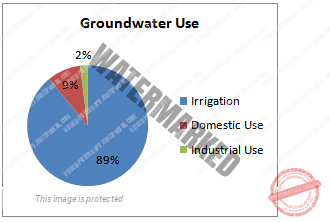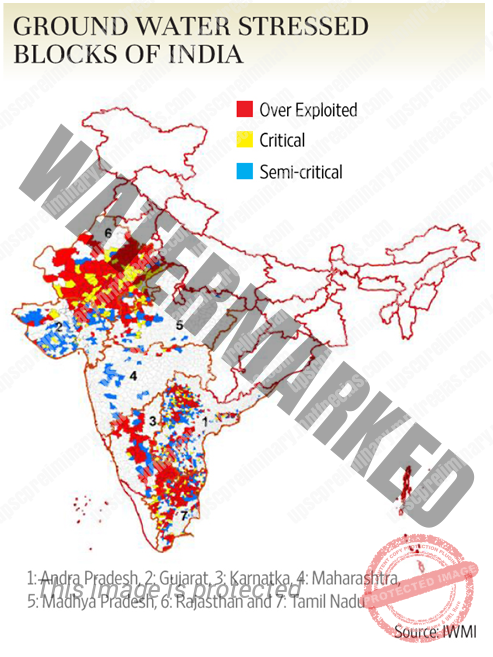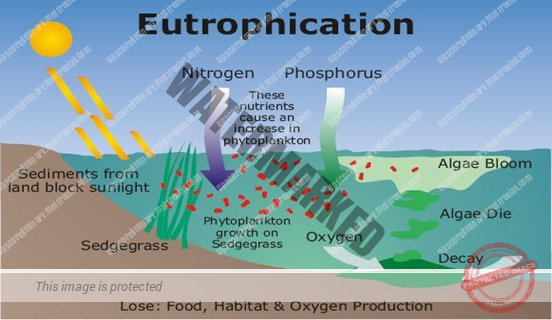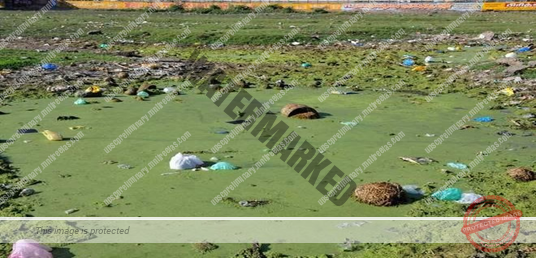- IMPACT OF GROUNDWATER POLLUTION
- INDIAN SCENARIO
- NUTRIENT POLLUTION – EUTROPHICATION, ALGAL BLOOM
UNIT 4 – ENVIRONMENTAL DEGRADATION – PART 10
Impact of Groundwater Pollution
HEALTH IMPACT: Poor drinking water quality results in various diseases. For example, arsenic poisoning can lead to skin diseases, gastro-intestinal diseases and cancer Fluoride contamination leads to damaged joints, bone deformities, fluorosis Prolonged intake of high Iron content water can cause haemochromatosis.
Consumption of water containing high levels of Nitrate can be a cause for some types of Cancer. It can also cause the BLUE BABY SYNDROME which affects newborn babies Viral and bacterial diseases due to contamination of groundwater by mixing of sewage and infiltration from latrine pits.
SOIL AND AGRICULTURE: Contamination of groundwater leads to reduction in soil quality and affects productivity. High salinity has resulted in decrease in agricultural productivity.
ENVIRONMENT: Groundwater pollution can cause certain types of nutrients that are necessary in small amounts to become far too abundant to sustain normal life in a given ecosystem. When groundwater that supplies Lakes, Rivers, Streams, Ponds, And Swamps becomes contaminated, this slowly leads to more and more contamination of the surface water
Indian scenario
The predominantly agricultural and rural economy of India results in over-exploitation of groundwater for irrigation and drinking purposes. This has resulted in groundwater depletion and contamination a major issue of concern. Some parts of various states are contaminated by Salinity, Arsenic, Fluoride, Iron, Nitrate and Heavy metals beyond the permissible limits of BIS.
Overall, the groundwater is contaminated with the presence of excess nitrate in as many as 386 districts followed by fluoride in 335 districts, iron in 301 districts, salinity in 212, arsenic in 153 districts, lead in 93 districts, chromium in 30 districts and cadmium in 24 districts of different states across India.
According to a recent Central Ground Water Board (CGWB) Report, Punjab was found to be the highest groundwater exploited state in India followed by Rajasthan, Delhi, and Haryana.
According to a 2016 Parliament committee report on water resources, nine states – in south, west and central India- groundwater levels are now described as “Critical”. “Critical” implies a stage where 90 per cent of groundwater has been extracted, with significant decline in recharge capability. 16 states and two Union Territories were categorised as “over-exploited”, which means 100% of groundwater has been drawn, with little chance of recharge
- Nutrient pollution – Eutrophication, Algal bloom
Eutrophication is when the environment becomes enriched with nutrients. This can be a problem in marine habitats such as lakes as it can cause algal blooms. Fertilisers are often used in farming, sometimes these fertilisers run-off into nearby water causing an increase in nutrient levels. This causes phytoplankton to grow and reproduce more rapidly, resulting in algal blooms. This bloom of algae disrupts normal ecosystem functioning and causes many problems.
The algae may use up all the oxygen in the water, leaving none for other marine life. This results in the death of many aquatic organisms such as fish, which need the oxygen in the water to live. The bloom of algae may also block sunlight from photosynthetic marine plants under the water surface. Some algae even produce toxins that are harmful to higher forms of life. This can cause problems along the food chain and affect any animal that feeds on them.




